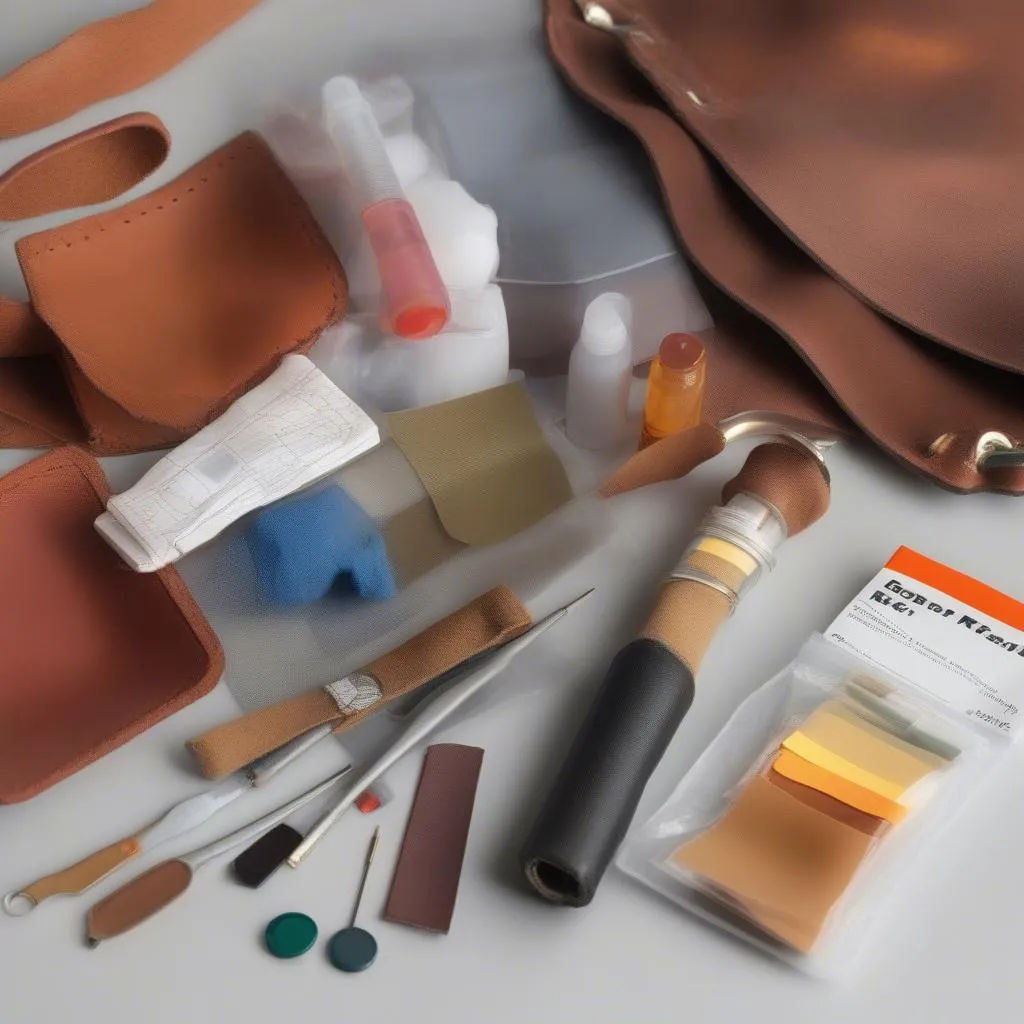Mercedes-Benz vehicles are known for their luxurious interiors, and a big part of that luxury comes from the leather seats. However, over time, even the highest quality leather can become worn, cracked, or faded. This can leave you wondering, “How much will it cost to fix my Mercedes leather seats?”. Well, you’ve come to the right place. In this comprehensive guide, we’ll explore the factors that influence the cost, provide estimated repair costs, and offer tips on how to keep your Mercedes leather seats looking their best.
Understanding the Factors That Influence Cost
Several factors can affect the cost to fix Mercedes leather seats. These include:
- Severity of the Damage: Minor scratches and scuffs will be cheaper to fix than deep cracks, tears, or extensive fading.
- Type of Repair Needed: Simple cleaning and conditioning will be less expensive than leather dye work, patching, or complete seat reupholstery.
- Location: Repair costs can vary depending on the labor rates at your chosen repair shop.
- Choice of Materials: Using OEM (Original Equipment Manufacturer) leather will typically be more expensive than aftermarket options.
Mercedes Leather Seat Repair Costs
Here’s a general idea of what you might expect to pay for Mercedes leather seat repair:
- Cleaning and Conditioning: $100 – $300 per seat
- Minor Repairs (scratches, scuffs): $150 – $400 per seat
- Dyeing and Color Restoration: $250 – $700 per seat
- Patching: $300 – $800 per seat
- Seat Reupholstery (full or partial): $1,000 – $3,000+ per seat
Expert Insight: “Choosing high-quality repair materials is crucial for long-lasting results. While OEM leather might be more expensive upfront, it often offers better durability and color matching compared to some aftermarket options,” says automotive upholstery specialist, John Miller, author of “The Art of Automotive Leather Restoration.”
Common Mercedes Leather Seat Problems and Solutions
1. Cracks and Tears
Causes: Prolonged exposure to sunlight, heat, and temperature fluctuations can cause leather to dry out and become brittle, leading to cracks. Sharp objects or rough use can also cause tears.
Solutions: Small cracks can often be repaired with a leather filler and dye. Larger cracks and tears may require patching or even seat panel replacement.
2. Fading and Discoloration
Causes: Exposure to UV rays from the sun is a primary cause of leather fading.
Solutions: Color restoration products and leather dyes can often restore the original color of faded leather.
3. Stains and Spills
Causes: Food, drinks, ink, and other substances can easily stain leather seats.
Solutions: Prompt cleaning is essential for stain removal. Leather cleaners and conditioners can help to lift stains and protect the leather.
Essential Tools for Mercedes Leather Seat Repair
- Leather Cleaner: Removes dirt, grime, and some light stains.
- Leather Conditioner: Restores moisture and suppleness to the leather, preventing future cracking.
- Leather Dye: Used to restore faded color or change the color of the leather entirely.
- Leather Filler: Fills in cracks and scratches to create a smooth surface for dyeing.
- Heat Gun (optional): Used to help set leather dyes and fillers.
- Various Applicators: Sponges, cloths, and brushes for applying cleaners, conditioners, and dyes.
 Leather Repair Kit
Leather Repair Kit
DIY vs. Professional Repair
Minor repairs like cleaning, conditioning, and addressing small scratches can often be done at home with a DIY leather repair kit. However, for more significant damage or if you’re unsure about the repair process, it’s best to seek professional help. Professional automotive upholsterers have the expertise and experience to deliver high-quality, long-lasting repairs.
FAQs about Mercedes Leather Seat Repair
Q: Can I use any leather cleaner and conditioner on my Mercedes seats?
A: It’s recommended to use products specifically designed for automotive leather. These are formulated to clean and condition without damaging the delicate finish of the leather.
Q: How often should I condition my Mercedes leather seats?
A: It’s a good idea to condition your leather seats every 3-6 months, or more frequently if they are exposed to extreme temperatures or sunlight.
Q: Can I prevent my Mercedes leather seats from cracking?
A: Regular cleaning, conditioning, and parking your car in the shade or using a sunshade can help prevent premature cracking and fading.
Q: My Mercedes seats are heated and ventilated. Can they still be repaired?
A: Yes, but it’s crucial to find a repair professional who has experience working with heated and ventilated seats. These seats have intricate wiring and components that need to be carefully handled during the repair process.
Tech Tip: If you’re experiencing battery drain issues related to your Mercedes seats, check out CARDIAGTECH’s helpful guide on “Mercedes Seat Draining Battery – Fix” to diagnose and resolve the problem: https://cardiagtech.com/mercedes-seat-draining-battery-fix/.
 Mercedes-Benz Interior
Mercedes-Benz Interior
Keeping Your Mercedes Leather Seats Looking Their Best
Mercedes leather seats are an investment in luxury and comfort. By understanding the factors that can cause damage and following these maintenance tips, you can keep your seats looking their best for years to come. Remember, whether you choose DIY repairs or opt for professional help, addressing issues promptly will save you money and hassle in the long run. And if you’re dealing with other Mercedes seat problems like cracks, learn more about effective solutions here: https://cardiagtech.com/fix-cracking-mercedes-seat/.

